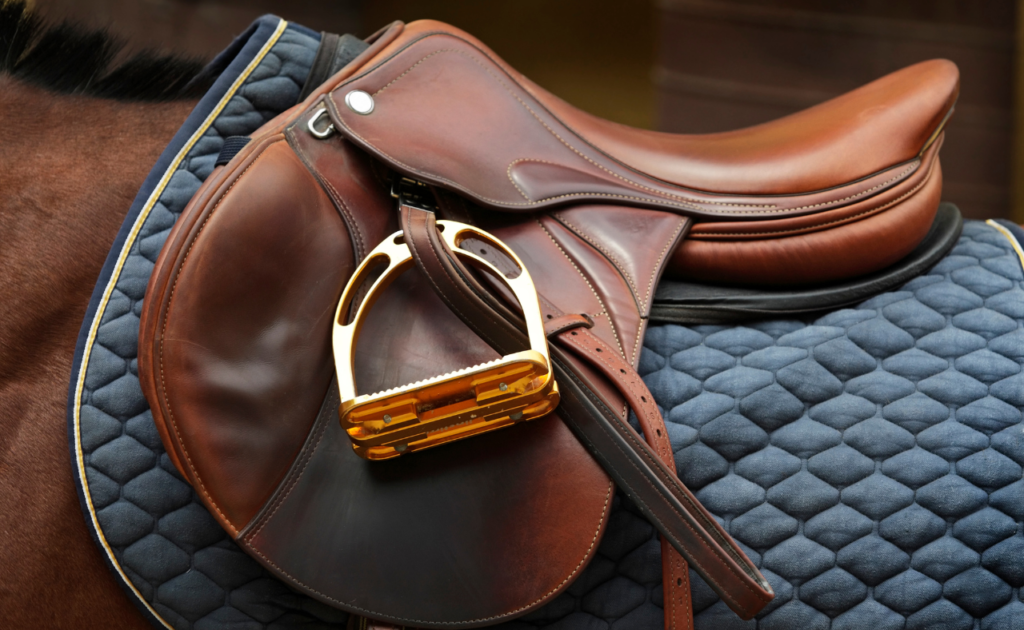The saddle is the trainer’s most important tool.
Proper seating of the saddle on the horse’s back is very important.
In the first step, in order to accustom the horse to the equipment without a rider, it is recommended to use a comfortable saddle for adapting the horse to the weight that he has to carry. This saddle is also suitable for training a foal.
The saddle should be massive and comfortable; using a saddle that is too light can be problematic. It can cause the harness to jump and turn, making the horse uncomfortable. Consequence it can cause stress and fear of the saddle.
We often use the exact saddle for our first rides – a saddle that we love and feel confident in for all our first rides. Our sense of security is important to the horse. Horse must think that the rider on his back knows what he is doing and can trust him. The saddle is the trainer’s most important tool.
Usually, at the beginning of training, the horses are still in the process of growing. According to their body structure, you can identify the dimensions they will reach.
A short back indicates strength and ability to bear the rider’s weight, which reduces the chance of back pain.
A high and wide hump will ensure a good fit in the saddle without slipping forward and sideways while riding.
Here are a few rules for adjusting a saddle on a horse’s back:
– Place a saddle without a blanket. This way we can see exactly how it sits and where the pressure points are.
– Place the saddle in its natural “attachment point”.
– We allow a gap of at least one and a half fingers between the hump and the bridge of the saddle.
– To make sure that the saddle does not touch the spine, inspect it and check if there are any traces of light on the other side.
– The width of the saddle must match the width of the horse. Make sure the harness is narrow enough. A saddle that is too wide will put pressure on the horse’s hump.
Of course, it is advisable to contact an experienced specialist.
The article is taken from the book “First Steps” by Nitzan Pelag.
